The latest Social Media trends for 2019

If you do a quick search for social media applications on the Apple or Google app stores, you’ll soon see that there are hundreds of them. But are any of them going to disrupt the market? The evidence seems to suggest that it won't. In fact, it proves more interesting to focus in on the evolution of those apps that are already more established. “In 2019, I’ll be looking more closely at those forgotten channels that I believe will actually be the new channels in 2019,” says Kelly Hendrickson, Social Media Manager at Hubspot. “We’re seeing how Snapchat is going to become hone in on new demographics, especially with the launch of the new gender swap filter that has already caused a sensation among the community’s users. Meanwhile, Facebook’s efforts to improve privacy and connections with friends and family means it will be possible for groups to become the new channel to watch, given the challenge in getting content in the newsfeed”.

In addition to Facebook and Snapchat, we should also take into account other platforms such as Reddit and Pinterest as we try to improve the scope of advertising and the multiple marketing tools available. However, if our role as a brand is closely linked to social media, audience growth and online engagement (especially among Z-generationers and millenials as a target audience) we must be very aware of all those platforms that can gain momentum later on. Monitoring this growth will tell us which channels are worth investing in. If we join a network that's expanding, we’ll be more able to launch exclusive, original content before the rest of our competition.
To this end, our Social Media doctor Gemma Vallet invites us to learn about the latest changes on the main social media platforms in 2019. These platforms have been relaunched or redesigned since 2016, and can boast a large pool of users and interest from investors.
TikTok, an unexpected revolution
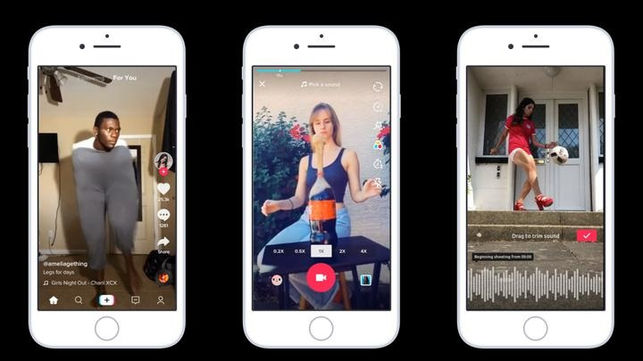
In 2018 the Musical.ly app was merged with a similar platform that was barely one-year old called TikTok. Since then, TikTok has brought together more than 500 million active users a month and a total of 800 million downloads worldwide, more than platforms such as Facebook and Instagram. Users that are under 30 have become the main consumers of the platform.
The network allows users to shoot short videos that are repeated in a loop, just like Vine, but with the added bonus of fun special effects, AR filters, text and music layers. Once the video is made, the app lets you optimise it by adding hashtags that can make it easier to find. This is also the main tool used for "challenges". Challenges are popular tasks or dares that people can do, with hashtags allowing others to find our videos.
Aside from being the tool of choice with popular comedians such as Jimmy Fallon, the platform is increasingly serving as a home for brands, so it's not surprising that other big firms, such as The Washington Post, are already using it regularly, with up to 100,000 followers. One might expect the content on this channel to be in line with the company’s formal style, but nothing could be further from the truth. The videos show what goes on behind the scenes, with fun moments from their workers. Guess has also decided to take advantage of this channel’s potential, and have launched the #InMyDenim challenge inviting Guess users to publish their video wearing the brand’s clothes to the song I'm a Mess by Bebe Rexha.
Caffeine, a direct competitor to Twitch
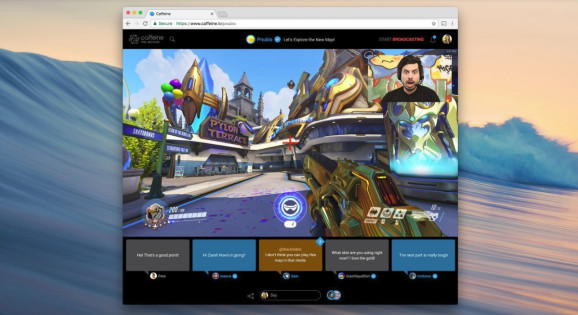
Caffeine is a platform created by former Apple designers that allows you to create broadcasts for friends and followers. These broadcasts are shown in a feed where users can react using emojis or leaving comments. As well as live video, it's also possible to cast a computer screen live as you play a video game, making it a potential Twitch competitor. Caffeine has also launched a monetization programme that rewards the most active broadcasters.
Although there is still no real data available at the moment, reports seem to suggest the platform has received an investment of up to 140 million dollars, with 21st Century Fox as the main shareholder. As a result of this collaboration, FOX has launched an initiative called Caffeine Studios, which will support Fox Sports at events and live programming to bring exclusive live entertainment content, including e-games, video games and sports.
The success of Caffeine and Twitch show how video platforms are being adopted by young audiences, especially among the Z generation. If this trend continues, marketers should start considering using it to showcase their brand through a variety of strategies, such as showing behind-the-scenes content, question and answer sessions, or other live video content.
Lasso, Facebook's version of TikTok
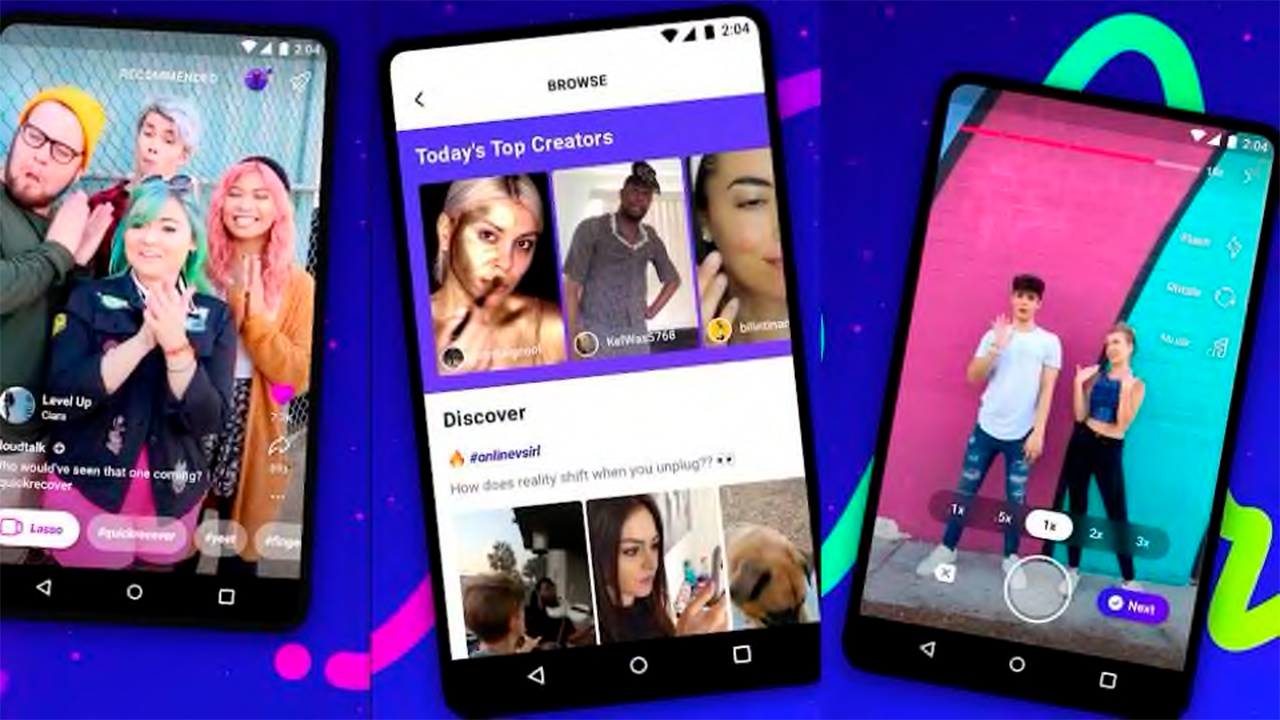
As Caffeine is to Twitch, so Lasso is to TikTok. This platform is mainly used to record videos up to 15 seconds long with filters and overlays for popular songs. The application focuses on an algorithm-based source of recommended videos, but also allows you to interact through hashtags or a page of collections by themes.
Unlike TikTok, this application does not allow filters or augmented reality effects, but users are already taking advantage of the slow motion and fast-forward function to create fun videos. What remains to be seen is what Lasso's strategy is going to be, bearing in mind that it has started out as an independent Facebook app and similar attempts, such as Slingshot and Poke, have failed.
Houseparty, a private party for young people
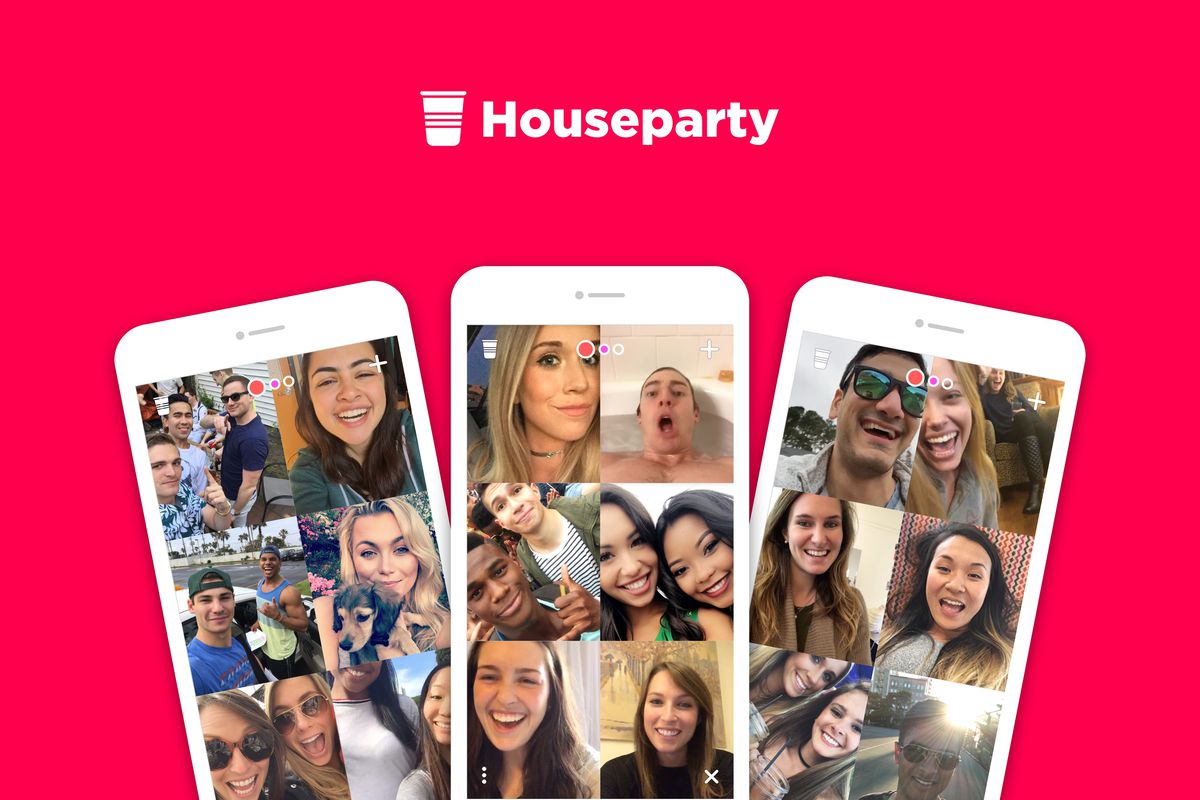
Houseparty is a group video application that enables video chats with up to eight users at a time. To make the experience even more interesting, users can use filters, stickers, and other fun effects while taking part in the conversation.
Although the app was launched three years ago it has undergone a lot of changes during its short life. It started out as Meerkat, but changed its name to Houseparty and renewed its main features in 2016. Since then, Houseparty has climbed up the app store rankings to 20 million users in 2018. That same year, the app continued expansion, adding new features that allow users to play games during online chats.
For now, the platform offers advertising space but future marketers could use it in other, more creative ways. For example, imagine sessions within fashion and beauty companies where they can invite an influencer to answer questions from the public and how to use their products. Although prospects seem hopeful, Houseparty has a large number of competitors, including Snapchat, which launched group video chats in 2018.
Steemit, the platform that rewards users with crypto coins
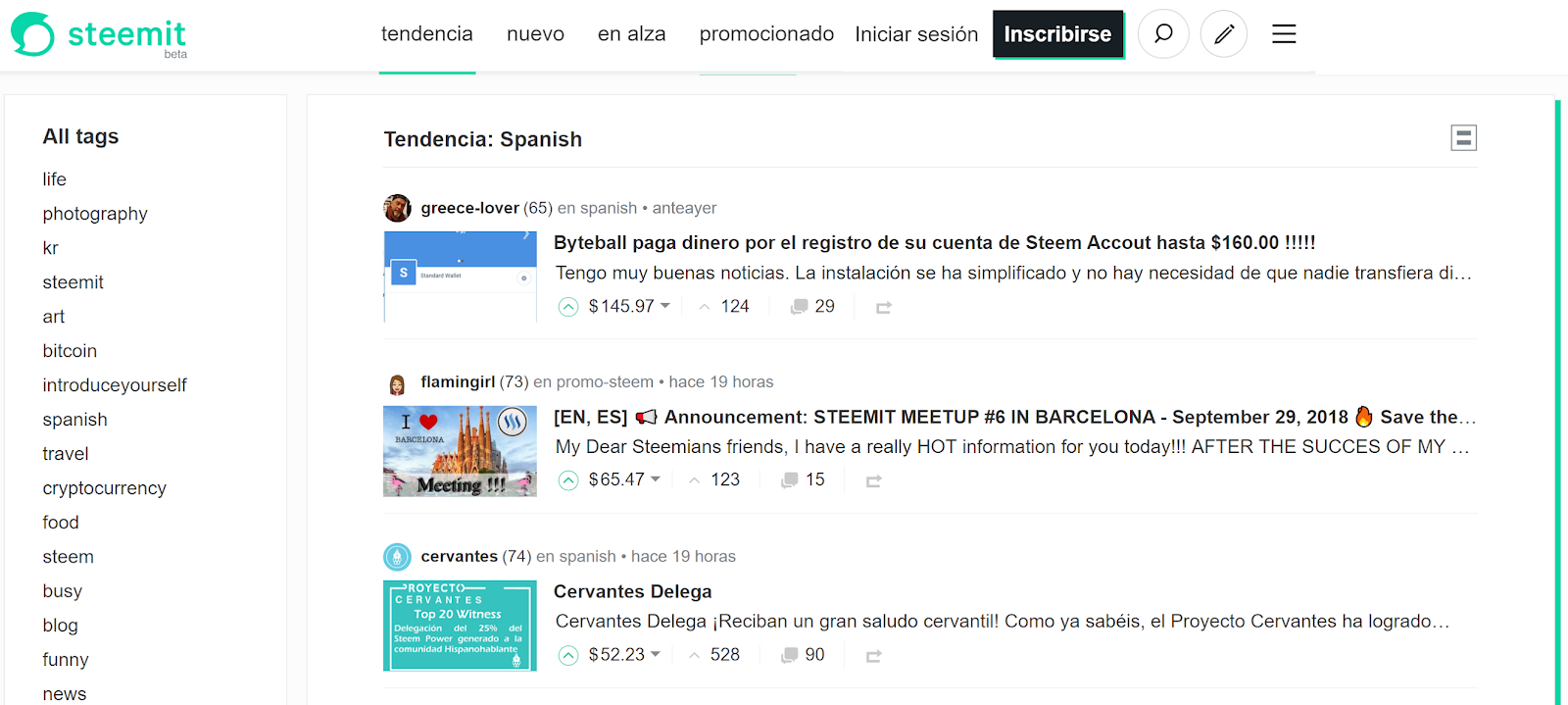
Steemit is a platform that is very similar to Reddit, but with the difference that while Reddit rewards its most active users by placing them at the top of feeds, Steemit also offers them a crypto currency called steem. It works in basically the same way as Reddit: users can interact with content by voting, leaving comments and sharing.
Steemit has one million users, with over 50K active users each month. Compared to other platforms, these numbers are quite modest, but it has already attracted the attention of media outlets such as TechCrunch and WIRED, and it has been labelled as one of the leading platforms worldwide in the crypto-currency market. It remains to be seen whether Steemit will take off but, regardless of whether it does or not, it’s an interesting example of how social media and crypto currencies can coexist in the same market. It would also serve all those companies that sell products or services in exchange for crypto coins. If this type of payment method consolidates and is accepted by younger market sectors and tech experts, it could open up new opportunities on other social platforms similar to this one.
Pinterest, the pins are back
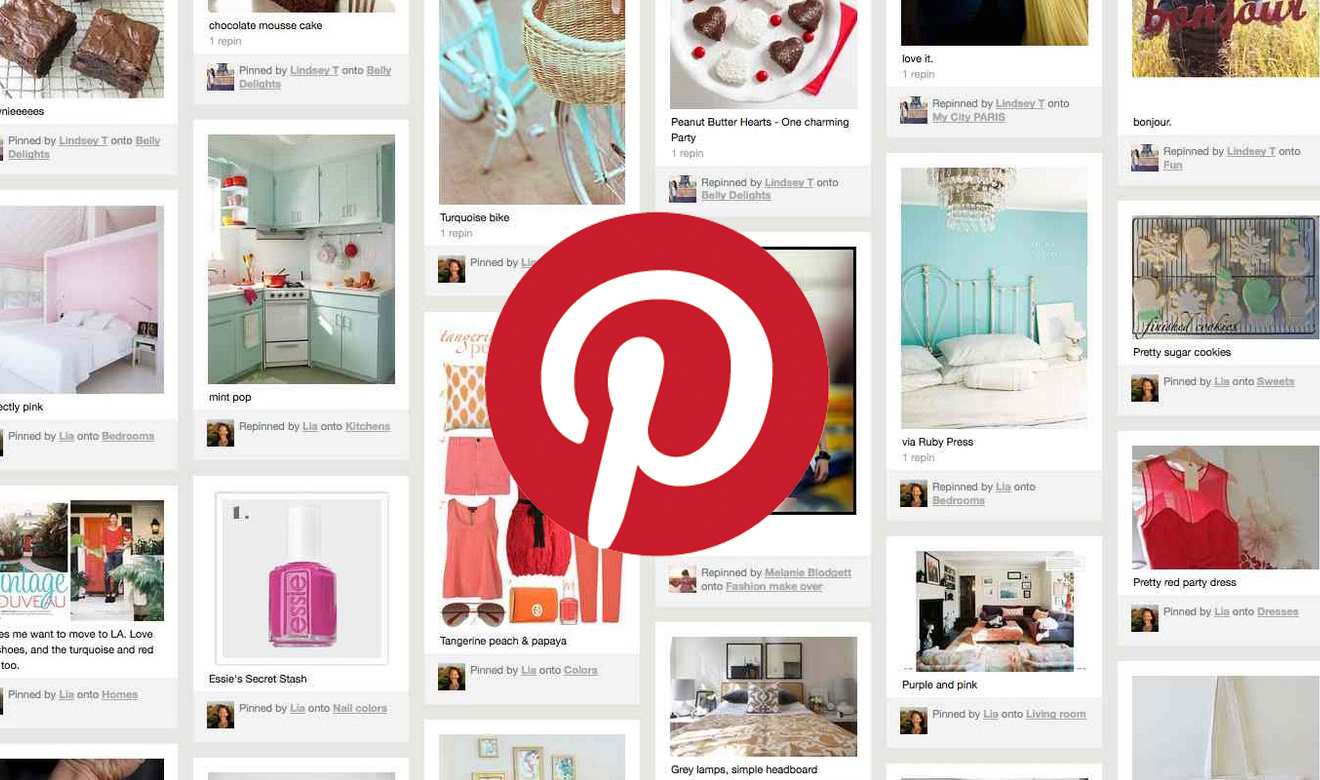
Seemingly against all odds, Pinterest has announced it has topped 300 million users a month, 30% more than the same period last year. Sales have also experienced a very rapid increase, thanks in part to growth in the advertiser base. Figures have reached up to 261 million dollars, 62% more than last year.
For their part, Twitter and Snapchat suggest there is still room to grow in the digital advertising and social networking markets, even as Facebook and Google remain the undisputed leaders. After a long period of mediocre growth, Snapchat brought in 13 million new daily users in three months, and exceeded 200 million daily users for the first time. It also increased quarterly revenues by nearly 50%, easily beating Wall Street predictions.
Twitter has also shown that it can be profitable and continues to increase its pool of daily users. About a month ago, the company reported 139 million daily users in the most recent quarter, users that can be impacted by ads, compared to 134 million in the previous quarter.
Pinterest is reluctant to categorise itself as a social media company rather than a productivity tool. "At its most basic level, it's all about the user", said Pinterest CEO Ben Silbermann. "It's not about following the news, accumulating followers or following celebrities. It's really about everyone's own personal interests". However, Pinterest makes money by offering an ad-based platform where marketers can reach a wide audience of users who are there to follow friends, colleagues and brands.